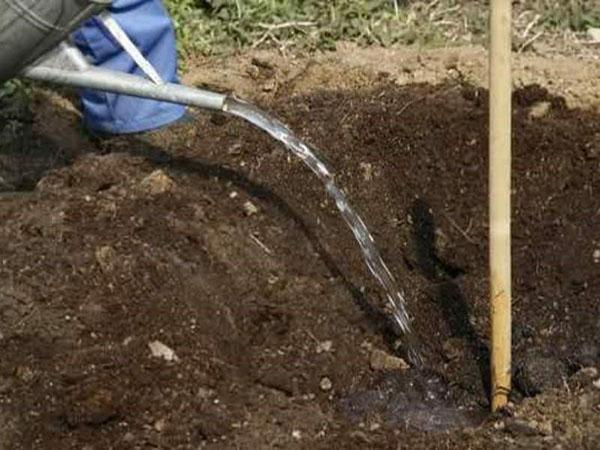Features of choosing a plum sapling and planting rules on the site
 Plum, like all fruit trees, does not take root in swampy areas. Also, two-year-old seedlings do not take root well in clay soil. The root system of the plum does not grow well in peat soil. For growing plums, sandy loam soil is used with the addition of cow humus or neutral soil. Instead of rotted manure, black soil is sometimes used.
Plum, like all fruit trees, does not take root in swampy areas. Also, two-year-old seedlings do not take root well in clay soil. The root system of the plum does not grow well in peat soil. For growing plums, sandy loam soil is used with the addition of cow humus or neutral soil. Instead of rotted manure, black soil is sometimes used.
It is important not to confuse chernozem with downstream pressed peat. Bottom peat is denser and has a grayish color. Chernozem is a loose soil, it is good for air and moisture. In terms of carrying capacity, black soil is comparable to river sand. High peat slowly absorbs and more slowly releases moisture into the soil.
Selection of seedlings
For planting trees in open ground, two-year plum saplings are used. A quality seedling must be grafted onto the stock. The inoculation should be at a height of 20-30 cm from the soil level. If the seedling is not inoculated, it is highly likely that a wild plum is being sold to you under the guise of a cultivar. Such trees will not bear much fruit. Wild plums are generally small and sour.
Since the cultivar is grafted onto the wild stock, the grafting trunks and the stock must differ in color. A quality plum seedling should have a developed root system and from three layers of skeletal branches. It is better to transplant seedlings with a closed root system grown in containers into open ground.
Plum planting pit
To obtain maximum yields, you need to choose the right planting site for the seedling and make organic fertilizers into the landing pit. To accelerate the growth of young trees, nitrogen fertilizers are also applied. Complex mineral fertilizers are mixed with soil, which is used to fill the planting pit. Its width and depth should be 70 cm. After planting in the ground, the seedling is well watered, and the soil is tamped to remove air pockets.
Do not under any circumstances apply chemical fertilizers to the planting hole, as this can burn the plum roots. The root collar of the plum must be raised 13 cm above the soil level. Over time, the soil will settle, and the root collar will deepen a little.